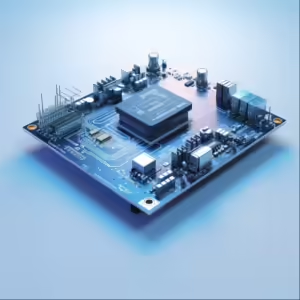Robotics: The interface between technology and innovation
Robotics, a fascinating and ever-growing field of technology and artificial intelligence (AI), deals with the design, construction, operation and use of robots. This discipline, which lies at the intersection of several technical fields, has far-reaching applications and influences numerous aspects of our daily lives. This article provides a comprehensive insight into the world of robotics, its key aspects, applications and future prospects.
What is Robotics?
Robotics is the science and engineering of robots, that is, automated machines that can perform various complex tasks, often with a certain degree of autonomy. It integrates disciplines such as mechanics, electronics, computer science, AI and others to create machines that can mimic or support human activities.
Core areas of robotics
- Robot design and construction: Creating robots that are suitable for specific tasks or for completing a wide range of activities.
- Control systems: Development of systems to control the actions and movements of a robot.
- Sensor technology: Use of sensors to enable robots to sense their surroundings and react accordingly.
- Robotics software: programming robots with algorithms to enable them to learn and adapt to new tasks.
- Human-robot interaction: Designing the interaction between humans and robots to ensure safety and efficiency.
Applications of robotics
- Industrial automation: Robots play a key role in automating manufacturing processes.
- Medical robotics: From robot-assisted surgeries to rehabilitation robots.
- Service robotics: For tasks such as cleaning, deliveries or customer support.
- Research and exploration: Use in inhospitable environments such as outer space or the depths of the oceans.
- Personal and household robots: Support in everyday life through robot technology.
Challenges in robotics
- Technical limitations: The development of advanced sensors and control systems remains a challenge.
- Cost: Robots can be costly to manufacture and maintain.
- Safety and Ethics: Ensuring robots act safely and ethically.
- Labor market and social impacts: The impact of robotics on the labor market and society is an important point of discussion.
Future of robotics
The future of robotics looks bright, with constant innovations expanding its uses. Advances in AI and machine learning will lead to smarter and more autonomous robots. The integration of robots into our everyday lives is expected to increase, presenting both challenges and opportunities.
Conclusion
Robotics is a dynamic and rapidly growing field that is continually pushing the boundaries of what is technologically possible. From industrial manufacturing to medical care to household support, robotics has the potential to transform our world in diverse and profound ways. While it poses technical, ethical and social challenges, robotics offers exciting opportunities for innovation and improvement in almost every area of our lives.






